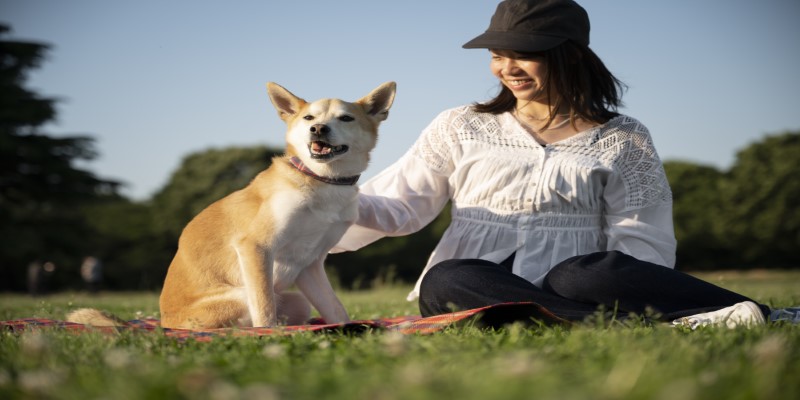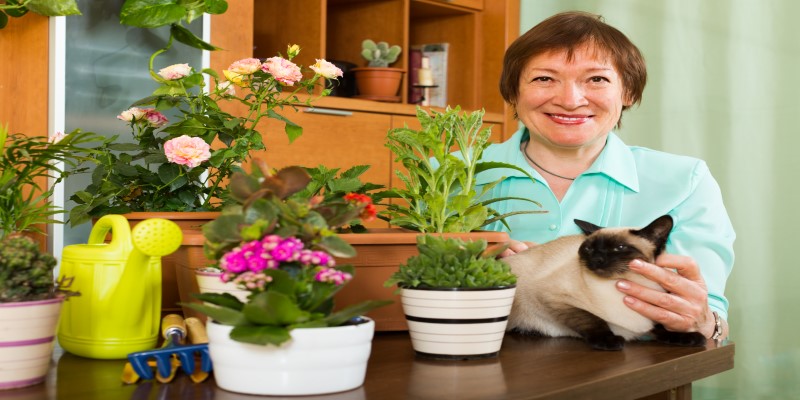How To Build A Pet-Friendly Garden: Safe Plants And Features For Pets
Creating a pet-friendly garden is an excellent way to ensure your furry friends can enjoy the outdoors safely. As pets are often curious and adventurous, it's essential to consider their needs while designing a space that is both functional and appealing. This guide will discuss various aspects of building a pet-friendly garden, including safe plant choices, features to incorporate, and general care tips to maintain a safe environment for your pets.
Understanding Your Pets Needs
Before you begin planning your garden, it's crucial to understand your pets' specific needs. Dogs and cats have different behaviors and preferences. For instance, dogs might enjoy open spaces to run and play, while cats may appreciate vertical spaces and sheltered areas. When designing your garden, consider your pets' size, age, and activity levels. Older pets may prefer softer ground and shaded areas, while younger pets might benefit from more active play spaces.
Choosing Safe Plants
One of the most critical aspects of a pet-friendly garden is selecting the right plants. Many common garden plants can be toxic to pets, leading to serious health issues. Therefore, it’s essential to research and choose non-toxic plants. Here are some safe options to consider:
Flowers
Many flowers are both beautiful and safe for pets. Marigolds, petunias, and snapdragons are vibrant choices that pose no harm to your pets. Additionally, sunflowers can add a cheerful touch while being safe for curious dogs and cats.
Shrubs And Bushes
When it comes to shrubs, consider planting hibiscus, which offers a stunning display of flowers without any toxicity to pets. Lavender is another great option; it not only adds color and fragrance but can also repel certain insects. Other safe choices include rosemary and sage, both of which are also edible.

Trees
For trees, look into planting dogwood or crabapple trees. These trees are safe for pets and can provide shade and a pleasant environment. It's essential to avoid trees like yew or cherry, which can be toxic if ingested.
Ground Cover
If you need ground cover, opt for clover or creeping thyme. These plants are soft underfoot and safe for pets to play on. They can help reduce mud and create a more inviting space for your pets.
Designing Safe Spaces
A pet-friendly garden is not just about plants; it’s also about how the space is designed. Here are some ideas to create safe and enjoyable spaces for your pets:
Fencing
If your pets like to roam, consider installing a secure fence. This will keep them safe from wandering off and protect them from other animals. Ensure that the fence is tall enough to prevent jumping and deep enough to deter digging. A solid wooden fence or a chain-link fence can work well, but be sure to check for any gaps or weaknesses.
Designated Play Areas
Creating designated play areas can help your pets enjoy the garden while keeping them safe. Use soft grass or pet-friendly turf for a comfortable surface. Consider incorporating agility equipment like tunnels, jumps, or weave poles for dogs. For cats, adding climbing shelves or a cat tree can provide entertainment and exercise.
Shaded Spots
Just like humans, pets need a place to escape the heat. Planting trees or installing shade sails can help create cool areas. Consider using materials like wicker or waterproof fabric to create shaded resting spots. This is particularly important for older pets or those with thicker fur who may overheat quickly.
Water Features
Incorporating a small water feature can enhance your garden while providing hydration for your pets. A shallow pond or a pet-friendly water fountain can be attractive and practical. Ensure that any water feature has a gentle slope or shallow entry points so pets can safely access it without risk of drowning.
Paths And Surfaces
Choosing the right surfaces for your garden paths is crucial for pet safety. Natural stone, mulch, or sand can provide soft walking surfaces that are gentle on your pets' paws. Avoid using gravel or sharp stones, as these can be uncomfortable or even dangerous.
Maintaining A Safe Environment
Once your pet-friendly garden is established, ongoing maintenance is essential to keep it safe. Regularly check for any toxic plants that might have been introduced accidentally. Keep an eye out for mushrooms, as some varieties can be harmful if ingested. Additionally, if you use pesticides or fertilizers, ensure they are pet-safe. Look for organic options or those specifically labeled as pet-friendly.

Regular Cleaning
Pets can be messy, especially if they enjoy digging or playing in the dirt. Regularly cleaning up debris and pet waste can help maintain a healthy garden. This not only keeps the space tidy but also minimizes any potential health risks to your pets.
Monitoring Behavior
Keep an eye on how your pets interact with the garden. If they seem to be attracted to certain plants or areas, you may need to reassess the safety of those features. Training your pets to stay away from specific areas can also be beneficial. Positive reinforcement can help teach them which parts of the garden are off-limits.

Seasonal Considerations
Different seasons bring various challenges for pet owners. In the summer, be cautious about hot pavement or surfaces that can burn paws. In the winter, ensure your pets have access to shelter and freshwater that doesn't freeze. Consider adding blankets or pet beds to the shaded areas to keep them comfortable year-round.
Creating A Sensory Garden
Incorporating sensory elements can enhance your pet-friendly garden. Pets enjoy using their senses, and a sensory garden can provide a stimulating environment. Consider adding elements like:

Textures
Use a variety of materials to create different textures throughout your garden. Soft grasses, rough stones, and smooth surfaces can engage your pets' sense of touch.
Scents
Adding fragrant plants, such as herbs or flowers, can provide a delightful experience for your pets. They may enjoy rolling around in the fragrant foliage, adding another layer of sensory engagement.

Conclusion
Building a pet-friendly garden requires careful planning and consideration, but the rewards are immense. A safe and enjoyable outdoor space can significantly enhance your pets' quality of life. By selecting non-toxic plants, designing secure and engaging spaces, and maintaining a clean environment, you can create a garden that your pets will love. With a little thought and effort, your garden can become a delightful haven for both you and your furry friends, providing endless hours of enjoyment and relaxation in the great outdoors.
Related Posts
- Pet Allergies: How To Live Comfortably With Pets When You Have Allergies
- The Science Behind Pet Emotions: Do They Feel Like Humans?
- Pet Photography Tips: How To Capture The Perfect Shot Of Your Pet
- The Truth About Grain-Free Pet Food: Is It Right For Your Dog?
- The Science Behind Pet Anxiety: Understanding And Managing Your Pet’s Stress
- A Holistic Approach to Caring for Your Senior Pet